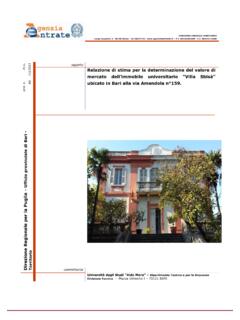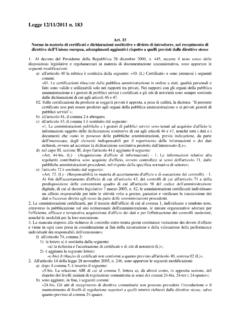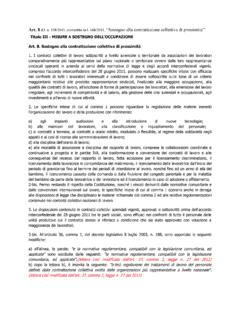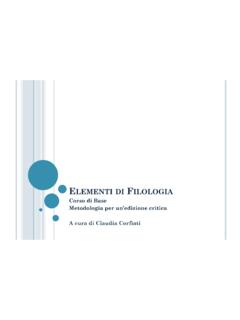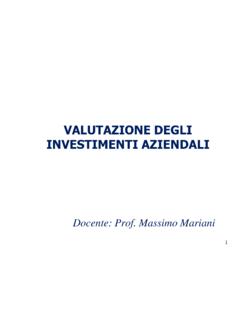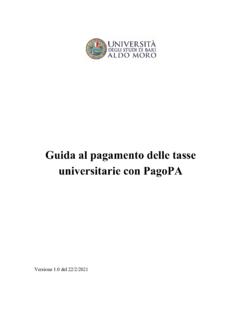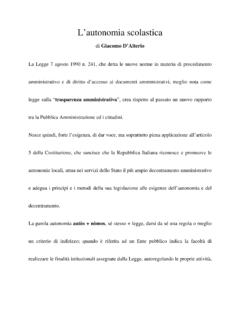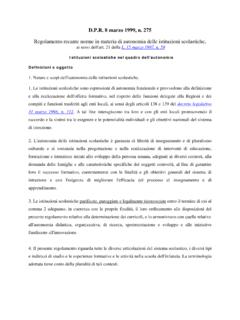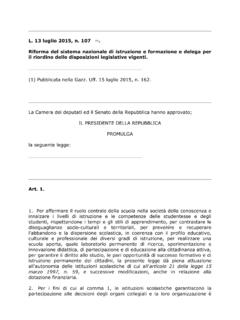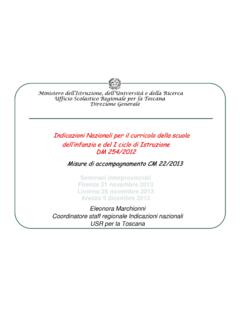Transcription of Virginia Woolf’s Mrs. Dalloway - Università degli Studi ...
1 Virginia Woolf s Mrs. DallowayInvisible PresencesTo the memory of my parentsTh ey were avid vobis terra e Life and Age of Woman, a print by A. Alden (Barre, Mass., [1835]). (Library of Congress Prints and Photographs Division, Washington, ) Virginia Woolf s Mrs. DallowayInvisible PresencesCLEMSON UNIVERSITYDIGITAL PRESSby Molly Hoff ivWorks produced at Clemson University by the Center for Electronic and Digital Publishing, including Th e South Carolina Review and its themed series Virginia Woolf International, may be found at our Web site: Contact the director at 864-656-5399 for 2009 by Clemson UniversityISBN 978-0-9796066-7-0 Published by Clemson University Digital Press at the Center for Electronic and Digital Publishing, Clemson University, Clemson, South with the Adobe Creative Suite CS2 and Microsoft Word. Th is book is set in Adobe Garamond Pro and was printed by Standard Register for Clemson University. Editorial Assistants: Ali Ferguson and Bridget Jeff s.
2 To order copies, contact the Center for Electronic and Digital Publishing, Strode Tower, Box 340522, Clemson University, Clemson, South Carolina 29634-0522. An order form is available at the digital press Web site (see above).Front and back cover images from the ruins of Pompei may be found in Roman Painting (Cambridge UP, 1991) and Ancient Mosaics ((British Mueum Press, 1998), both books by Roger illustration: a drawing by Miss N. T. Talbot included as Figure 35 ( Drawing of the fi gural frieze in the Room of the Mysteries ) in P. B. Mudie Cooke, Th e Paintings of the Villa Item at Pompei, Journal for Roman Studies 3 (1913): 156-174. Cf. Molly Hoff , Coming of Age in Mrs. Dalloway , Woolf Studies Annual 3 (1997), p. 97 and UNIVERSITYDIGITAL PRESSvTable of ContentsPreface and Acknowledgments 7-9A Note on the Text and Abbreviations 10 Introduction 1 Mrs. Dalloway : Annotations 9 Section [1] .. 9 Section [2] .. 42 Section [3] .. 59 Section [4] .. 90 Section [5].)
3 101 Section [6] .. 104 Section [7] .. 112 Section [8] .. 129 Section [9] .. 146 Section [10] .. 199 Section [11] .. 212 Section [12] .. 236 Afterword 244 Appendix 254 1. Divine Proportion .. 254 2. Free Indirect Discourse .. 254 3. Great Expectations .. 257 4. Th e Narrow Bed .. 258 Glossary 259 Works Consulted 263 Index 275viPreface and AcknowledgmentsMrs. Dalloway is a popular choice for many readers and the most misunderstood as well. Th e obscurities require a somewhat more sophisticated readership than is usually forthcoming. Th e format of the present explication is designed as a kind of story board for a screenplay that records the atoms as they fall upon the mind in the order in which they fall no matter the disconnectedness or incoherence ( Virginia Woolf, Common Reader 150). In that regard it may serve as a kind of reference manual for commentary on indi-vidual passages that may be of interest.
4 Th e material it aff ords for lesson plans and syllabi will be of value for those who profess literature. It however has its own beginning, middle, and end to guide the reader. Th us it serves as two books at allusions in Mrs. Dalloway abound in bookish relationships that encompass much more than a reading list for World Lit 101. Th e signifi cances within this mosaic, moreover, demonstrate a quasi- Darwinian phenomenon, that books descend from books ( Woolf Th e Leaning Tower ). Obscurities here concern plots, myths, languages living and dead to such a large degree that they exert a metaliterary infl uence. Th e principal literary imitation is the conformity to the conventions of ancient literature. Among them certain paths seem to lead to fertile land, others to the dust and the desert (Common Reader 146). It is clearly a learned as a convention implies being versed in the literature of the past. Th e Dal-loway antiquarian interest addressed to an elite audience takes in language and etymology, history and mythology, bucolic and bookish idioms, wrapped up in imitation, analogy and deceit.
5 Withholding information and concealment of the true situation is typical. Re-dundancies and repetitions are frequent. Literary ornament is featured as erudite subject-matter, while confl icting conceits are part of the humor. Common words have specialized senses. All it asks is that the reader be actively involved; irony is a perpetual game. It is very e major concept by means of which Mrs. Dalloway achieves its intoxicating eff ect derives from Latin love elegy. Clive Bell would have designated it as signifi cant form (Bell Art 12 et passim). Latin elegy is founded [on] an aesthetics based upon a semiotic fact: the independence of the literal meaning; an exercise in equilibrium and therefore in gracefulness; a text that, far from being a mirror to reality, is equivocal to the point of dizziness; a form of writing that is suffi cient unto itself because it does not explain any-thing (Paul Veyne, Roman Erotic Elegy 19).
6 Th e centonism is manifested as a montage of parodies and quotations. Th e poetic thrust of Latin elegy comes forth somewhat more prosaically in Mrs. Dalloway which nevertheless maintains the charming poetic structures that elegy features, principally the elegance of ring composition, arranged as a luminous halo. Extreme syntactical complexity contributes to dream-like logic, or lack of it, which in elegiac poetry is an end in is style, according to J. P. Sullivan (10) is not light verse but rather a sophisticated, self-conscious, and often wryly humorous way of writing, mannered perhaps, but no more so than the writings of Donne or even Pope. In fact, our nearest analogy might be wit in the 17th century sense. Self-mocking claims such as the inability to write epic or the preference for hunting hares and small game, not lions and boars, typify the style. Sullivan viiiVirginia Woolf s Mrs. Dallowayfurther characterizes its ironic playfulness as parody, verbal wit, humorous exaggeration, and sexual the Roman elegists creation through eroticism is a fi gure that is always pres-ent.
7 Love aff airs predominate just as the Trojan War was sparked by a notorious relation-ship. Yet Propertius claimed that in his elegies, something greater than the Iliad is being born ( ). His audacity was prescient. Th e haughty sense of humor, the gallery of genre scenes (Veyne s phrase), and the mannerist erotica thrive in Goethe s Roman Elegies, in Ezra Pound s Homage to Sextus Propertius, and even in D. H. Lawrence s Look, We Have Come Th rough to name a few. Th e love elegies on John Donne s mistress (going to bed) are also akin: O my America! Th ere is even something of Propertius s Cynthia strutting and fretting among Shakespeare s sonnets, so scandalous to fastidious readers like Richard Dalloway . Latin elegy is a vibrant presence in the not so high society (Veyne s phrase) of Mrs. Dalloway as Latin elegy, Mrs. Dalloway includes sexuality, nudity, and violence, all portrayed with irony and parody, not evident to everyone.
8 Scatological references appear with some frequency. Homosexuality is prominent. Th ere is evidence of drinking and smoking. Fur-thermore, lachrimosity, false confi dences, and the narrow bed characterize loving reading as the prevailing elegiac technique. Th e lusty narrative cleverly lays bare the elegiac devices which it paradoxically obscures. Equivocation undermines sincerity. Structurally decep-tive, this love story concludes as a beginning. Serious humor, the upside down world of satire, is the operative style in Mrs. Dalloway . Th is is adult entertainment. Th e prominent narrator, the genius loci, stealthily summarizes an ongoing raid on the literary past which conceals and reveals less accessible levels of meaning (Gilbert and Gubar 73). Like the elegiac poets, Propertius and his colleagues, she creates impressions from orts and fragments, albeit written for the less popular taste yet as an outlet for fri-volity. Reception of satire in Latin elegy must rescue its political incorrectness from utter fatuity, and it requires a fairly cosmopolitan readership.
9 Th us the Dalloway narrator, like the poet, is an ironical construct conscious of the absurdity of the slavery of love. She labors in the elegiac family business where aesthetics and allegory intersect in fantasy with tongue fi rmly in cheek. At the same time, this raconteuse records the creation of a fi ction of a fi ction revealing a self-portrait of the mind of the Dalloway languishes in the shadow of and in response to James Joyce s Ulysses, a mock-epic version of Homer s epic, Th e Odyssey. Latin elegy, instead, prefers to treat exclu-sively of love, not epic. Th e love interest in elegy is Cynthia, Delia, Corinna, or life itself as the case for each poet may be and the poems that vitalize them. For the elegiac poet, writ-ing about love and writing about writing indicate much the same thing. Similarly, Mrs. Dalloway , a mock-elegy, treats writing about heroic concepts satirically as a perennially erotic matter. Virginia Woolf implies that instead of composing long Iliads, paraphrasing the elegist ( Propertius ), something greater than Ulysses is being e most obvious statement of its area of concern is Mrs.
10 Dalloway s own interest with life vita in Latin. What she liked was simply life. Th at s what I do it for, she said, speaking aloud, to life. While always equivocating between the name of the character and the name of the book, like Propertius, Mrs. Dalloway becomes truly the longest love letter in Th e origins of this book lie in my eff orts as a curious reader to determine for myself as much as possible Virginia Woolf s meanings when she wrote this very beautiful and very puzzling novel. My eff orts soon involved a survey of world literature. Over the course of this study I have made a number of observations that seemed quite pertinent, and I have thought that others might also fi nd them enlightening and entertaining as debts are many and include all I owe to Professor Margaret McBride who in-troduced me to Virginia Woolf; to Professor Bates Hoff er who instructed me in decon-struction; to Professor Alan Craven who contributed his endorsement of Classics in the study of Modern literature, his scholarship in Shakespeare, and the London experience; to Professor Stephen Kellman s descriptions of the self-begetting novel; and to Professor Paul Alessi, Classical scholar and Latinist who introduced me to elegiac poetry (my great-est debt) and Pompeii, without whom I would have had very little Latin and much less Greek.
